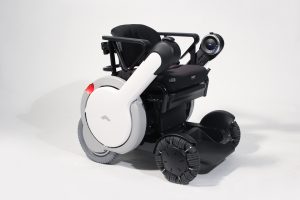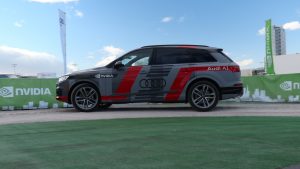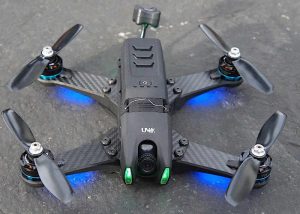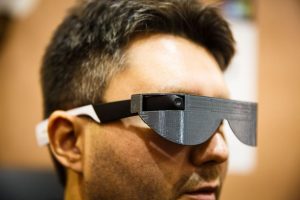09 Jan World’s largest innovation event celebrates 50 years this January
The International Consumer Electronics Show (International CES) showcases more than 3,800 exhibiting companies, including manufacturers, developers and suppliers of consumer technology hardware, content, technology delivery systems and more; a conference program with more than 300 conference sessions and more than 165K attendees from 150 countries.
And this year CES celebrated its 50 years in style.
CES 2017 showcased the connected future of technology. With more than 3,800 exhibiting companies and exhibit space of more than 2.6 million net square feet, CES 2017 was a record-breaker, welcoming the world’s biggest companies in addition to hosting more than 600 startups at the Eureka Park Marketplace. More than 175,000 industry professionals, including 55,000 from outside the U.S., convened in Las Vegas to drive the ever-evolving global technology industry forward.
The program included subjects from every major industry, with product launches that propel global markets from automotive, sports and fitness, software, healthcare, entertainment and more.
Remarquable facts:
- Qualcomm CEO Steve Mollenkopf introduced the 5G future, a new kind of network with unprecedented scale, speed and complexity. “5G will be the tipping point that builds on LTE and finally enables IoT,” said Mollenkopf. During the keynote, Qualcomm introduced the Snapdragon 835, the first 10 nanometer mobile processor that can deliver extended battery life, built-in security, eye-based authentication, secure audio, on-device machine learning and immersive experiences.
- Ford President and CEO Mark Fields shared the company’s vision for how the future of mobility will be transformed by connectivity. “Imagine what could happen when the way you get around looks completely different. Cities will change. The way we work and play and socialize will transform. And it will all be enabled by connectivity.” He also recapped Ford’s recent partnership with Toyota to form the SmartDeviceLink Consortium to establish industry-driven standards for in-vehicle apps
Here are Our TOP Favorite producs of the Year :
- Best Accessibility Tech: Whill Model M

- Whill’s Model M is an electric wheelchair meant to boost mobility for people with disabilities. Powered wheelchairs have been around for decades, but this new version from Whill has a compact, sturdy design that allows people to move across different surfaces independently. The patented omni-wheel technology enables maneuverability and makes this wheelchair a clear winner in this category. — Mona Lalwani, Senior Editor
- Best Automotive Technology: Audi & NVIDIA Self-Driving Car

- Autonomous vehicles are no strangers to the halls of CES, but Audi and NVIDIA’s collaboration on a self-driving Q7 is worth some extra attention. Dubbed the “world’s most advanced AI car” it’s set to hit the roads in just three years time, with the ability not only to navigate by itself but track the people inside, acting as a smart co-pilot even when a human is at the helm.
- Best Innovation (Disruptive Tech): Honda Riding Assist

- For the second year in a row, automotive technology is taking our Best of CES Innovation award. Honda’s Riding Assist is one of those rare pieces of technology that feels like magic when you first see it. And unlike much of what you see at CES every year, Riding Assist is genuinely new and has the potential to make things safer for motorcycle riders. This year often felt like a very iterative CES, which made the sheer “wow” factor of Rider Assist stand out even more. — Nathan Ingraham, Senior Editor
- Best Robot or Drone: UVify Draco HD

- At CES this year we’ve seen a slew of drones, but UVify stood out for a number of reasons. Drone racing is becoming increasingly popular, but there are still many challenges for new pilots to get into the sport. UVivy’s Draco dissolves many of those, with a modular, easy-to-repair design, high-quality live video feeds from the camera and assisted flight modes for learning. All of this, without compromising on race performance. — James Trew, Deputy Managing Editor
- Best of the Best: LG OLED W-Series

- It’s rare that a product truly blows us away at CES, but LG’s W-Series OLED TV did just that. At just 2.6 millimeters thick across its entire body, it’s the slimmest TV we’ve ever seen. It’s not quite paper-thin, but it sure is close. And this isn’t a case of style over substance either. Its picture quality is better than last year, and the TV also supports more HDR standards and comes with a Dolby Atmos-enabled soundbar (which also handles all of your inputs). The only downside? You need a flat wall to mount it; there is no stand.– Devindra Hardawar, Senior Editor
- Best Start-UP : Aira

- Although visually impaired folks have little difficulty leading normal, productive lives, they occasionally need help with some tasks, like making shopping lists or reading restaurant menus. For times like these, Aira is there to help. The system uses a video feed from smart glasses or a phone’s camera to connect the user with an Aira agent who sees what they see and can help guide the user through their task in real time. The video feed isn’t constant, mind you; it’s designed to act more as an on-demand assistant rather than a replacement of the user’s existing assistance systems.
Sources:
http://www.ces.tech/News/Press-Releases
https://www.engadget.com/2017/01/07/presenting-the-best-of-ces-2017-winners/
https://www.engadget.com/2017/01/06/introducing-the-best-of-ces-2017-finalists/



